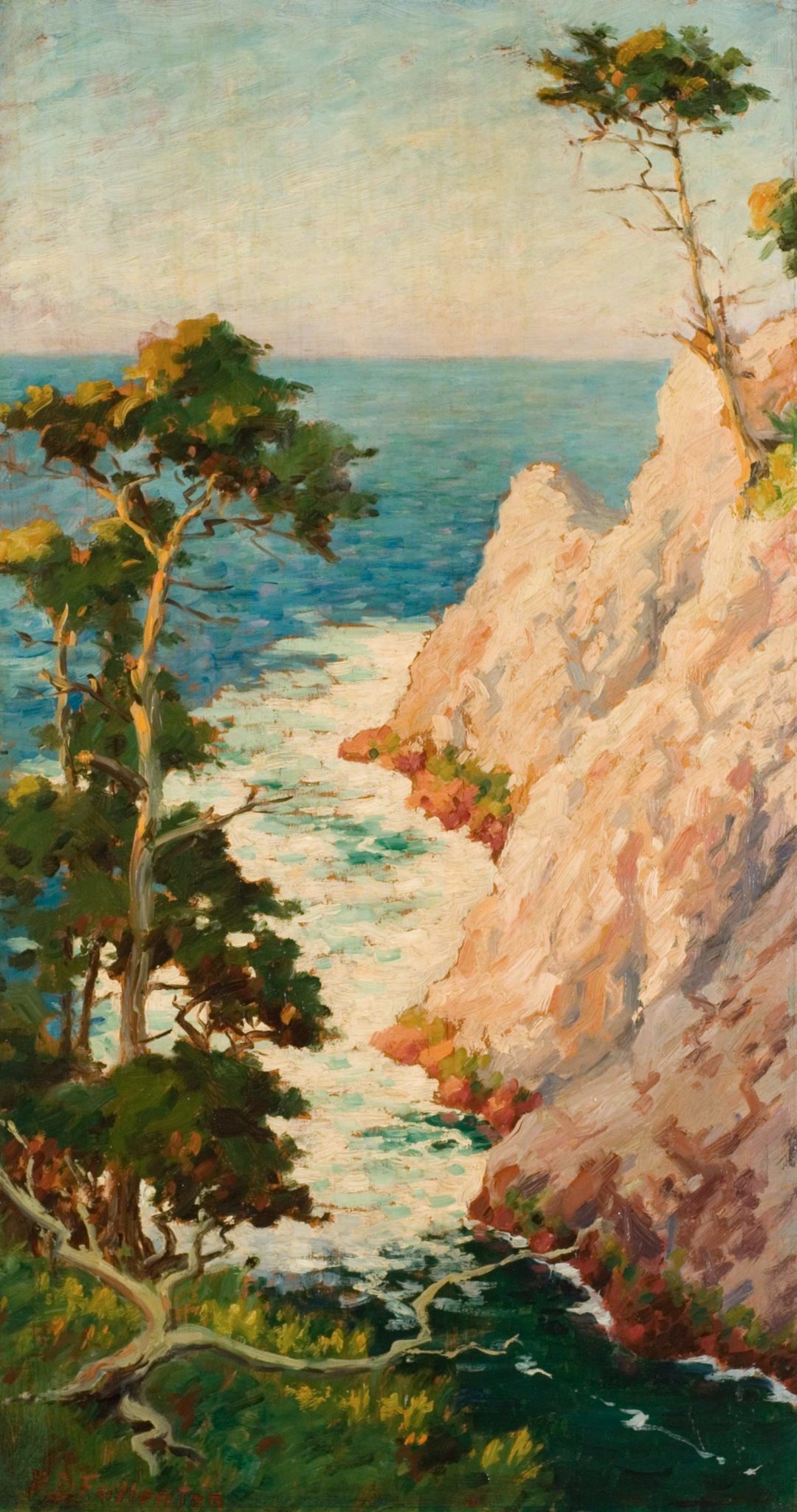Collections
In Situ: The Painted Panel
- Museum Hours: Tuesday through Sunday, 10am to 5pm
Robert Fullonton (1876 – 1933)
Rocky Seacoast
Robert Fullonton has the dubious distinction of being the only artist who painted a panel for the Griswold House dining room that cannot now be seen there. His panel was turned to the wall when the artist skipped town without paying the bill he owed Florence Griswold for room and board. (William Chadwick later painted the panel’s other side, which is on display.)
Fullonton knew this view in Carmel so intimately that he could paint it from memory.
Just north of the rugged Big Sur area, Carmel also has headlands, surf, and trees that seem made for the American Impressionist vision. From the high vantage point in this landscape, one looks down, indeed plunges down, to white surf, then up to bright blue ocean and a high horizon line. Trees and rocks at the sides emphasize the verticality of the view. Perspective is flattened and any illusion of depth is created by means of overlapping shapes, as in the Japanese woodblock prints that Impressionist artists loved so well. A lively set of colors is applied in dabs that provide a sense of the intense sunlight that suffuses the scene.
ROBERT FULLONTON (1876-1933)
ROCKY SEACOAST
OIL ON WOOD PANEL
GIFT OF THE ARTIST
Childe Hassam (1859-1935) Isle of Shoals, 1906 Oil on canvas, Gift of the Hartford Steam Boiler Insurance and Inspection Company
Old Lyme artists ventured to the beach less often than the California Impressionists, but they did paint the coastline on occasion. Two examples include William Chadwick’s beach near Griswold Point and Childe Hassam’s waves crashing on the rocks near the Isle of Shoals off the coast of New Hampshire.
Fullonton was in Old Lyme in 1918. He was still fairly new to the art profession then, having begun painting full-time only in 1911. He grew up in Europe, studied at Oxford and Harvard, and worked in Los Angeles as a civil engineer before turning to art, the profession his mother had long pursued. From about 1916 he was prominent in the new Impressionist art colony at Laguna Beach, much farther south than Carmel.
He and his mother experienced the uneven ride that most professional artists are all too familiar with, but they were unable to cope with the ups and downs. They spent money wildly when any came their way, saved nothing, and were periodically impoverished. Although he would become known as one of California’s best painters, Fullonton often resorted to selling paintings for a dollar or for food. He died destitute. Sadly, his behavior at Old Lyme proved to be prophetic. Often he could not or did not pay his bills.


